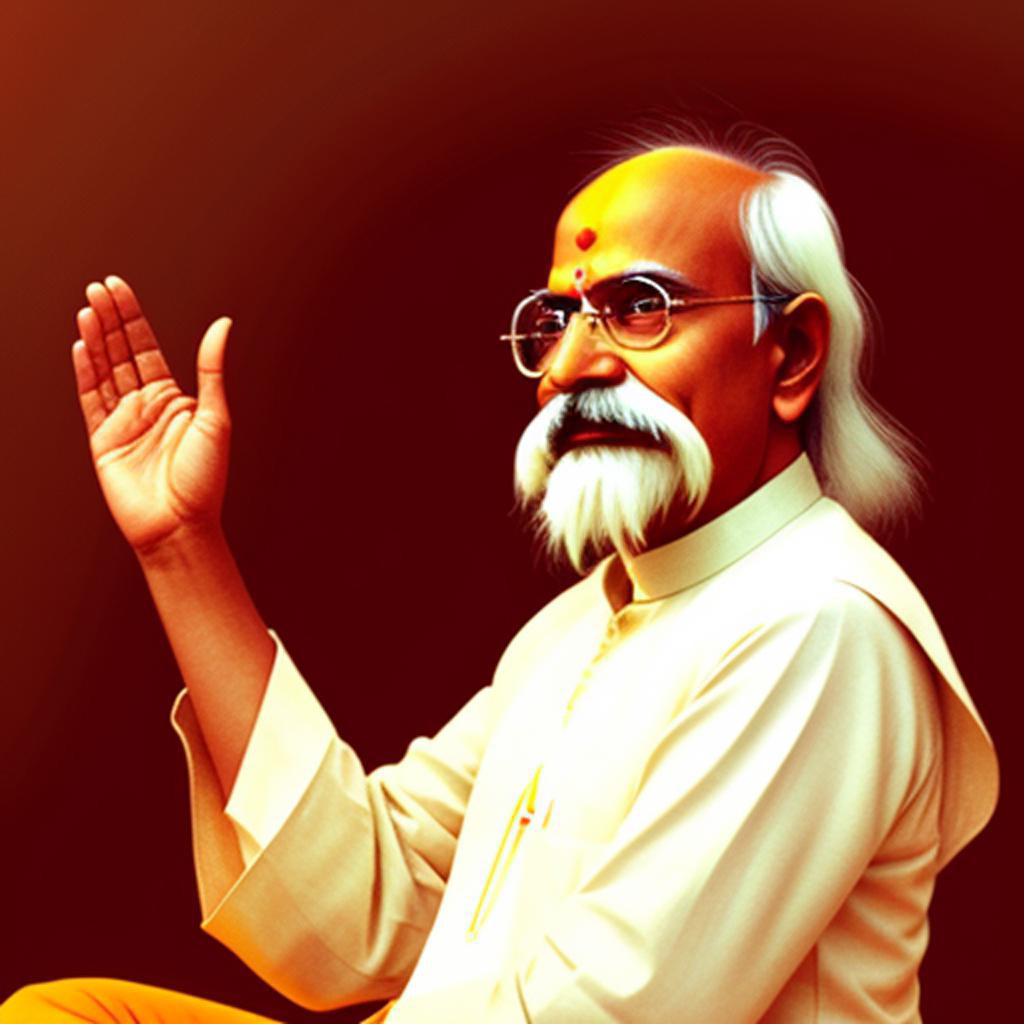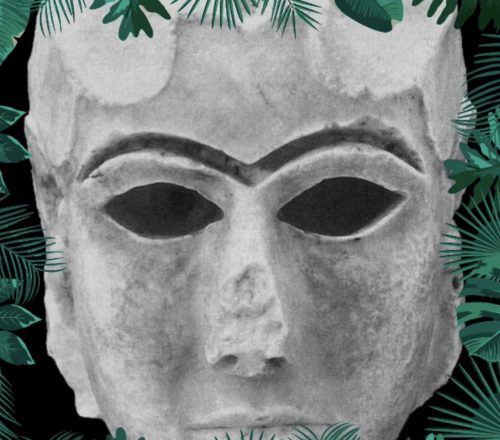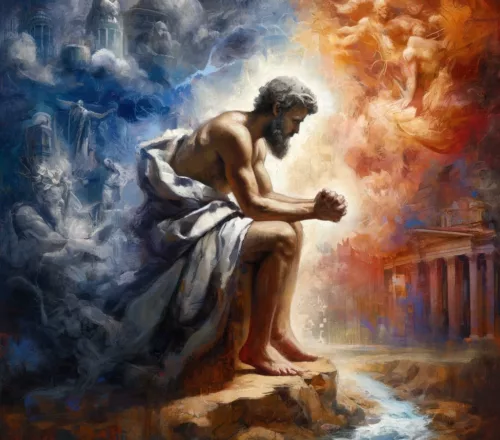
Table of Contents
His Personality, Spirituality and Influence
Lahiri Mahasaya, also known as Shyama Charan Lahiri, was a prominent yogi and guru of the 19th century in India. He is considered to be one of the most influential spiritual figures of his time, as his teachings and practices laid the foundation for the spread of Kriya Yoga. Lahiri Mahasaya was a disciple of Mahavatar Babaji, a legendary yogi, who is believed to be an immortal spiritual being. In this article, we will explore the personality, spirituality, and influence of Lahiri Mahasaya.
Personality
Lahiri Mahasaya was known for his humble, gentle, and compassionate personality. He was a family man and a householder who lived a simple and disciplined life. Despite being a spiritual master, Lahiri Mahasaya did not isolate himself from society but rather remained engaged with people from all walks of life. He was respected and loved by his family, friends, and disciples, who looked up to him as a role model.
Spirituality
Lahiri Mahasaya’s spiritual practices were rooted in the ancient tradition of Kriya Yoga. Kriya Yoga is a spiritual discipline that involves the practice of pranayama, meditation, and self-realization. Lahiri Mahasaya learned Kriya Yoga from his guru, Mahavatar Babaji, and went on to share his knowledge and experience with his disciples. He emphasized the importance of inner spiritual practices over external rituals and ceremonies, as he believed that the true purpose of spirituality was to realize the divine essence within oneself.
Lahiri Mahasaya’s spiritual teachings were based on the idea of self-realization, which he defined as the attainment of a state of consciousness that transcends the limitations of the ego. According to him, self-realization is the highest goal of human life, and it can be achieved through the practice of Kriya Yoga. Lahiri Mahasaya’s teachings emphasized the unity of all religions and the universal nature of spirituality. He believed that all religions ultimately lead to the same goal of self-realization.
Influence
Lahiri Mahasaya’s teachings and practices have had a profound influence on the spiritual landscape of India and the world. He is considered to be the father of modern Kriya Yoga, and his disciples, such as Swami Sri Yukteswar Giri and Paramahansa Yogananda, went on to spread the teachings of Kriya Yoga to a wider audience. Yogananda’s book, “Autobiography of a Yogi,” which describes his experiences with Lahiri Mahasaya and his own spiritual journey, has become a spiritual classic and has inspired millions of people around the world.
Lahiri Mahasaya’s influence can also be seen in the work of other spiritual teachers, such as Sri Aurobindo and Ramana Maharshi, who were inspired by his teachings and practices. Kriya Yoga has become a popular spiritual discipline, and many people have reported experiencing profound spiritual transformations through its practice.
Lahiri Mahasaya was a spiritual master who embodied the principles of humility, compassion, and self-realization. His teachings and practices have had a significant impact on the spiritual landscape of India and the world, and his legacy continues to inspire people to this day. Lahiri Mahasaya’s emphasis on the unity of all religions and the universal nature of spirituality is particularly relevant in today’s world, where people are seeking ways to bridge the divides that separate us. Lahiri Mahasaya’s life and teachings serve as a reminder that spirituality is a personal journey that can lead us to the realization of our true nature and the attainment of inner peace and fulfillment.
Lahiri Mahasaya as a Brahmin
As Lahiri Mahasaya was a Brahmin, his caste might have played a role in his spiritual practices and social interactions during his lifetime. In the Hindu caste system, Brahmins are considered to be the highest caste, associated with priestly duties and spiritual knowledge. This could have influenced his access to education and exposure to spiritual texts and practices.
However, Lahiri Mahasaya’s teachings and practices emphasized the universal nature of spirituality and the unity of all religions, suggesting that he did not view spirituality through the lens of caste or social hierarchy. He emphasized the importance of inner spiritual practices and self-realization, which are accessible to people from all backgrounds and castes.
It is worth noting that during Lahiri Mahasaya’s time, there were many social and cultural factors that influenced people’s lives, including their spiritual practices. The caste system was one of these factors, but it is important to understand that Lahiri Mahasaya’s teachings and practices transcended these societal constructs and focused on the essence of spirituality itself.
Brahmins are The Custodians of Hinduism
Brahmins are a Hindu caste group traditionally considered to be the highest in the social hierarchy
Brahmins are a Hindu caste group traditionally considered to be the highest in the social hierarchy. They are considered to be the custodians of Hinduism, and are responsible for performing religious ceremonies and rituals. In this article, we will explore the history, significance, and role of Brahmins in Hindu society.
Origins
The origins of Brahmins can be traced back to the Vedic period, which lasted from around 1500 BCE to 500 BCE. During this time, the Vedas, which are the oldest sacred texts of Hinduism, were composed. The Brahmins were responsible for preserving and interpreting these texts, and for performing rituals and sacrifices. Over time, the Brahmins became a distinct caste group, and their social status became closely associated with their religious duties.
Significance
Brahmins are considered to be the custodians of Hinduism, and their role in the religion is considered to be crucial. They are responsible for performing religious ceremonies and rituals, such as weddings and funerals, and for conducting pujas (worship) in temples. They are also responsible for teaching and interpreting the sacred texts of Hinduism, and for providing guidance to the community on matters of ethics and morality.
Brahmins are considered to be the most learned and knowledgeable members of Hindu society, and their expertise in matters of religion and spirituality is highly respected. Their role as spiritual leaders has given them a significant amount of influence and power in Hindu society.
Social Status
Brahmins are traditionally considered to be the highest caste group in the social hierarchy. They are followed by the Kshatriyas (warriors), the Vaishyas (merchants), and the Shudras (laborers). This social hierarchy is based on the idea of varna, or color, which was originally used to describe the different social roles of individuals in ancient society.
Brahmins have traditionally enjoyed a privileged position in Hindu society, with access to education and other resources that were denied to other castes. This has led to criticism of the Brahmin caste system, with some arguing that it perpetuates inequality and discrimination.
Contemporary Issues
In contemporary India, the role and significance of Brahmins has become a topic of debate and controversy. Some argue that the Brahmins still wield an unfair amount of power and influence in Hindu society, and that their privileged position has led to the exclusion and marginalization of other castes.
Others argue that the Brahmin caste system is an important part of Hindu tradition and culture, and that efforts to abolish it are misguided. They point to the positive contributions that Brahmins have made to Hinduism and Indian society, and argue that their role as spiritual leaders is still relevant and important today.
Brahmins are an important and influential group in Hindu society, with a rich history and tradition that spans thousands of years. Their role as spiritual leaders and custodians of Hinduism is considered to be crucial, and their expertise in matters of religion and spirituality is highly respected. However, their privileged position in the social hierarchy has also led to criticism and controversy, with some arguing that the Brahmin caste system perpetuates inequality and discrimination. Overall, the role and significance of Brahmins in Hindu society remains an important and ongoing topic of debate and discussion.
Do they work?
Yes, Brahmins work, just like any other group of people. While their traditional roles have been focused on religious and spiritual duties, modern-day Brahmins are involved in various professions, including medicine, engineering, law, education, and business.
In contemporary India, many Brahmins have moved away from their traditional occupations and have pursued careers in other fields. There are Brahmin doctors, engineers, lawyers, politicians, and scientists, among others. Brahmins have also been active in social and political movements, advocating for social justice, human rights, and equality.
While some Brahmins still practice traditional religious and spiritual roles, the majority of Brahmins today have diversified their occupations and are actively engaged in various professions and activities.
Shop tips
brahmins and hinduism on Amazon
Thank you for reading, shares and comments!
✨ Comment Policy ✨
We welcome thoughtful, kind, and constructive comments that contribute to meaningful conversations.
Please note:
- Promotional links and unsolicited offers will be removed.
- Spam, irrelevant content, or self-promotion without prior permission will not be published.
- We value quality engagement over quantity — thank you for helping us keep this a respectful and inspiring space!
Sources openai Language models, aitrot, picsart and mib
Take time to learn
Invest in your future
Embark on a journey into the realm of affiliate marketing and craft your own website within a vibrant, supportive community. Join me in this adventure, where you can begin as a free starter and stay as long as you desire. Enjoy complimentary hosting and foundational teachings to set you on your path. For those with advanced skills, opportunities to elevate your expertise await. Take a moment to explore and witness the magic for yourself!




